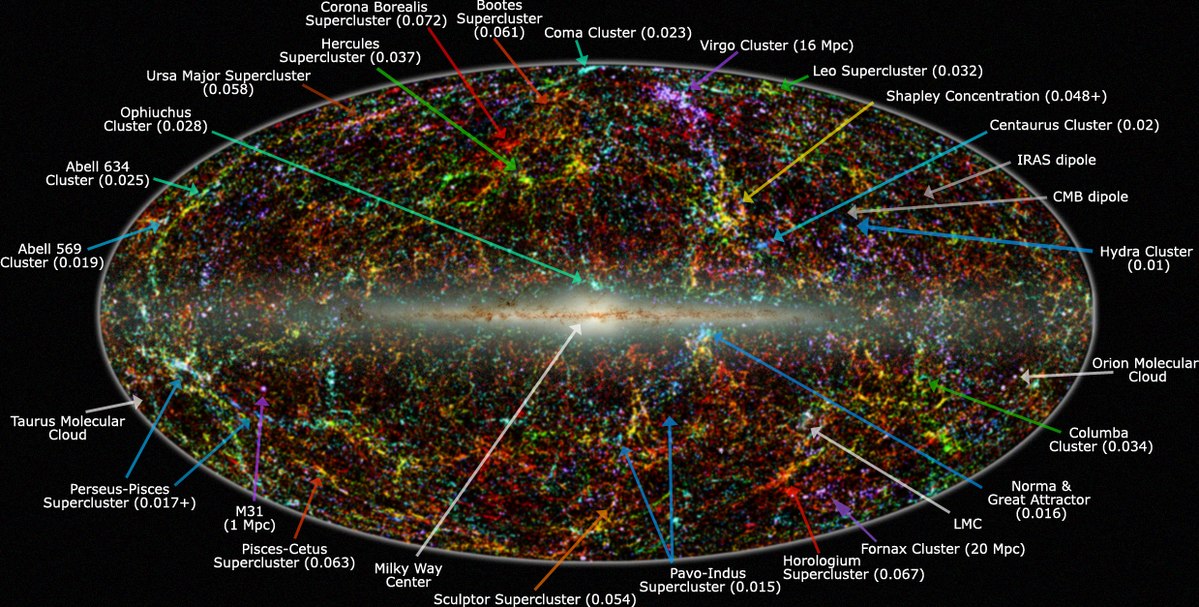Share some things that make you smile!
- Thread starter davidmc1158
- Start date
The sport of Formula 1 is rife with intensity and high emotion, its drama only rivaled by daytime soap operas. Then there’s Kimi Räikkönen (bottom-right,) a man so comically stoic, his emotions run highest when he’s asleep; you could shoot his dog in the face on the day of his child’s birth and he’d have no strong opinion. This is such a “him” response, I laughed out loud.


This is a tricky one to recommend because it's not a short one. Rather, it's a three-parter that clocks in at about an hour total, sharing a Pathfinder tabletop experience. Now, stories about dealing with "that guy", or times where creative thinking yielded hilarious results are a dime a dozen. A rarer story, however, is when a player's unexpected decision - and some good roleplay between that player and the GM - leads to a truly emotional subplot. Such is what we see here, in a story where one player decides that his character would raise a black dragon as his daughter.
And because that bears a bit of explaining: No, I do not mean that the dragon became his familiar/pet/mount/battle companion. This is very much a 'downtime RP' story wherein the player is trying to raise a black dragon as his adopted daughter. This is not a "and then she came to fight the big bad" story. This is a more slice-of-life story about family.
In some ways it's cheesy, but it's my kind of cheesy, focusing on a few themes that I've always had a weakness for.
And because that bears a bit of explaining: No, I do not mean that the dragon became his familiar/pet/mount/battle companion. This is very much a 'downtime RP' story wherein the player is trying to raise a black dragon as his adopted daughter. This is not a "and then she came to fight the big bad" story. This is a more slice-of-life story about family.
In some ways it's cheesy, but it's my kind of cheesy, focusing on a few themes that I've always had a weakness for.
Last edited:
- Apr 1, 2009
- 14,987
- 3,849
- 118
- Gender
- Whatever, just wash your hands.
Thing is, that's pretty much just part of astrophysics calculations. It's how astronomers are able to calculate, down to the minute, when and where on earth, things like eclipses will be visible. Rewinding time and calculating where the earth was in it's orbit, and in relation to the rest of the background space, is actually pretty elementary stuff for astronomers. We literally did calculations like that in Astronomy 101, first semester.View attachment 3614
Haha! Wait… Hey, yeah! Time travel WOULD require some extremely exact physical coordinate calculation!! Never thought about that!
While I didn't stick with astronomy, and eventually dropped out of college, I do vividly recall being surprised, when I went into the class, how the exact same physics equations I used, to track a ball thrown by Timmy on a hill, back in my high school physics class, was pretty much the same one I was using to figure out where in the sky Jupiter and the Moon would be, so I could plot their course for my class.
Basic geometry and physics is at the root of astrophysics. If you know how to plot an arc in a circle/oval, and can plot velocities, congrats, you can plot orbital mechanics to a surprisingly precise degree.
OT:
Last edited:
Yeah, I get all that; I'm saying all that on TOP of figuring out time travel and incorporating it would be a massive undertaking that science fiction [to my knowledge] hasn't tackled. And we're not just talking about tracking celestial bodies; we're talking about pinpointing an exact, comparably minute space on the globe for a time traveling device to arrive at! You could travel back, forget to carry a "1" somewhere in your calculations and end up in a wall or over the ocean! And we're also talking about charting trajectories in the past or future. ALSO, you'd be a still body suddenly appearing on a body rotating at 1,000 mph (assuming inertia doesn't travel through time with you; ) you'd be flung and splatter against the nearest solid object!Thing is, that's pretty much just part of astrophysics calculations. It's how astronomers are able to calculate, down to the minute, when and where on earth, things like eclipses will be visible. Rewinding time and calculating where the earth was in it's orbit, and in relation to the rest of the background space, is actually pretty elementary stuff for astronomers. We literally did calculations like that in Astronomy 101, first semester. Honestly, orbital mechanics of celestial bodies, is pretty much just standard velocity/mass style equations, from your garden variety physics class.
While I didn't stick with astronomy, and eventually dropped out of college, I do vividly recall being surprised, when I went into the class, how the exact same physics equations I used, to track a ball thrown by Timmy on a hill, back in my high school physics class, was pretty much the same one I was using to figure out where in the sky Jupiter and the Moon would be, so I could plot their course for my class.
Basic geometry and physics is at the root of astrophysics. If you know how to plot an arc in a circle/oval, and can plot velocities, congrats, you can plot orbital mechanics to a surprisingly precise degree.
That settles it; time ravel is impossible; I know you were all wondering.
that's my point though, astronomical calculations ARE that precise. It's why they know what the starscape would've actually looked like, at the long/lat for the Titanic, and why the film got it wrong. It's how they can plot a landing zone for a probe on a planet, which requires tracking TWO different planets, moving at different speeds, in different orbits. And they are pretty freaking accurate.Yeah, I get all that; I'm saying all that on TOP of figuring out time travel and incorporating it would be a massive undertaking that science fiction [to my knowledge] hasn't tackled. And we're not just talking about tracking celestial bodies; we're talking about pinpointing an exact, comparably minute space on the globe for a time traveling device to arrive at!
I mean I get the joke, I do, I just mean that the "amazingly tough science!" the joke is built on, really isn't that amazing. It's pretty much the entry level stuff. "You must know how to do this shit before we let you play with the big toys, like time machines and such"
There are still other calculations to consider which may cause concern, such as the expansion of the universe, the milky way moving away from other galaxies and towards "the great attractor."that's my point though, astronomical calculations ARE that precise. It's why they know what the starscape would've actually looked like, at the long/lat for the Titanic, and why the film got it wrong. It's how they can plot a landing zone for a probe on a planet, which requires tracking TWO different planets, moving at different speeds, in different orbits. And they are pretty freaking accurate.
I mean I get the joke, I do, I just mean that the "amazingly tough science!" the joke is built on, really isn't that amazing. It's pretty much the entry level stuff. "You must know how to do this shit before we let you play with the big toys, like time machines and such"Anyone that time traveled and missed the fucking planet, wasn't a scientist, they were the fucking janitorial custodian who got nosey and touched the big DO NOT PRESS THIS BUTTON button.

Great Attractor - Wikipedia
 en.wikipedia.org
en.wikipedia.org

How far do we travel through the universe in our lifetimes?
Earth revolves around the sun, but the solar system and the Milky Way are moving too. Tot all that up and we’ve all come a very long way, as our readers explain
"However, the universe has been expanding ever since the big bang, about 13.8 billion years ago. All galaxies are moving away from each other at a speed proportional to the distance that separates them. We can’t measure our speed relative to our starting point because the universe has no centre or edge. If there were nothing to disturb this motion, we would be stationary relative to the radiation left over from the big bang, the cosmic microwave background radiation. However, we are careering towards the Leo and Virgo constellations, pulled there at more than 600 kilometres per second by a group of galaxies dubbed the Great Attractor. This is nearly three times the speed at which we orbit the centre of the Milky Way."
In short, I would still fervently recommend nobody attempt to use their functioning time machine.
Not going to pretend to completely understand any of that, but EXACTLY my point. Charting the movement of celestial bodies in real-time has to be [speaking from my own limited understanding] infinitely easier than calculating to it in a static past or a future based on even highly accurate assumption. The past might sound easiest, but you're still stuck with the conundrum of arrive as a still body in a moving past; unless you arrive moving at 1,000mph, you're toast! (Well, you're "jelly" most likely.)There are still other calculations to consider which may cause concern, such as the expansion of the universe, the milky way moving away from other galaxies and towards "the great attractor."

Great Attractor - Wikipedia
en.wikipedia.org

How far do we travel through the universe in our lifetimes?
Earth revolves around the sun, but the solar system and the Milky Way are moving too. Tot all that up and we’ve all come a very long way, as our readers explainwww.newscientist.com
"However, the universe has been expanding ever since the big bang, about 13.8 billion years ago. All galaxies are moving away from each other at a speed proportional to the distance that separates them. We can’t measure our speed relative to our starting point because the universe has no centre or edge. If there were nothing to disturb this motion, we would be stationary relative to the radiation left over from the big bang, the cosmic microwave background radiation. However, we are careering towards the Leo and Virgo constellations, pulled there at more than 600 kilometres per second by a group of galaxies dubbed the Great Attractor. This is nearly three times the speed at which we orbit the centre of the Milky Way."
In short, I would still fervently recommend nobody attempt to use their functioning time machine.
There's a difference between "precise" and "exact." The former allows for error, even minute error; the latter does not. You would have to be EXACT to arrive in the past or future unscathed and un-smeared against a wall. Even with "exact" calculations, who's to say the destination in the past or future (which we wouldn't know traveling from the relative past) isn't obstructed by something? Maybe the cleaning lady moved the couch to the left a few feet 13 years ago; maybe the garbage man which blocks your landing alley was a few minutes sooner or later that day; you can't calculate for that stuff. Landing a rover on an completely unpopulated planet with no ocean in real-time is easier than landing on one densely populated, cover by 70% water in the past or future.that's my point though, astronomical calculations ARE that precise. It's why they know what the starscape would've actually looked like, at the long/lat for the Titanic, and why the film got it wrong. It's how they can plot a landing zone for a probe on a planet, which requires tracking TWO different planets, moving at different speeds, in different orbits. And they are pretty freaking accurate.
I mean I get the joke, I do, I just mean that the "amazingly tough science!" the joke is built on, really isn't that amazing. It's pretty much the entry level stuff. "You must know how to do this shit before we let you play with the big toys, like time machines and such"Anyone that time traveled and missed the fucking planet, wasn't a scientist, they were the fucking janitorial custodian who got nosey and touched the big DO NOT PRESS THIS BUTTON button.







